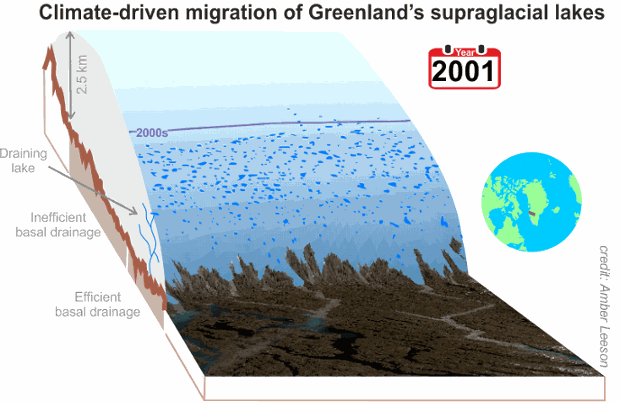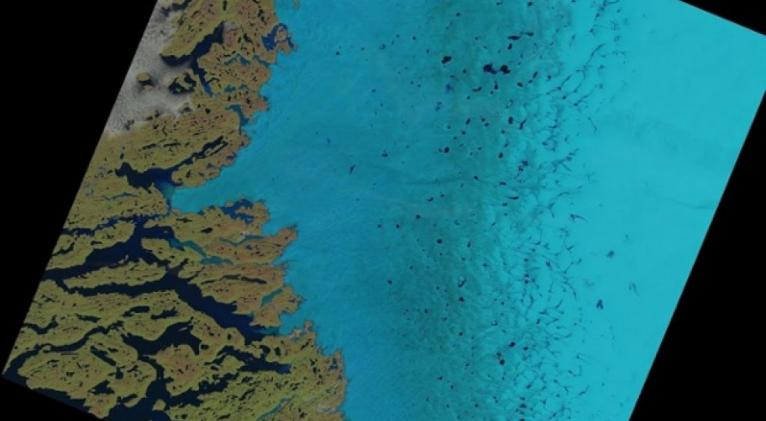Melting ice from the coast of Greenland could make a much bigger contribution to rising sea levels than has previously been thought, a new study suggests.
Scientists believe a previously overlooked side-effect of global warming could greatly increase the rate of melting of the vast Greenland ice sheet.
The ice covers 1.7m sq km (656,000 sq m), an area three times the size of Texas. If all the ice melted and flowed into the sea, oceans around the world would rise by as much as six metres (20ft), causing extensive damage to coastal communities.
While such a disaster is not expected to happen, ice losses from Greenland are predicted to contribute 22 cm (8in) to global sea levels by 2100.
But the new findings related to lakes formed from melted ice and snow indicate that this figure may be significantly too low.
The study shows that as Arctic temperatures rise, Greenland will develop a rash of these “supraglacial” lakes which are expected to spread much further inland.
By 2060, the amount of land they cover could be double what it is today.

Future Greenland ice melt – animation Photograph: Amber Leeson
One key effect the lakes have, once they reach a critical size, is to drain through fractures in the ice to reach the ice sheet base. Like a lubricant, the lake water causes the melting ice to slide more rapidly into the ocean.
The lakes also have a direct impact on ice sheet melting because, being darker than ice, they absorb more of the sun’s heat.
Lead researcher Dr Amber Leeson, from the University of Leeds’ School of Earth and Environment, said: “Supraglacial lakes can increase the speed at which the ice sheet melts and flows, and our research shows that by 2060 the area of Greenland covered by them will double.
“When you pour pancake batter into a pan, if it rushes quickly to the edges of the pan, you end up with a thin pancake. It’s similar to what happens with ice sheets: the faster it flows, the thinner it will be.
“When the ice sheet is thinner, it is at a slightly lower elevation and at the mercy of warmer air temperatures than it would have been if it were thicker, increasing the size of the melt zone around the edge of the ice sheet.”
The scientists based their findings on observations of the ice sheet from European Space Agency satellites and predictions of future ice melting from a climate simulation model.
Until now, supraglacial lakes have been restricted to a 62-mile wide low-lying band around Greenland’s coastline. At higher elevations further inland it has been too cold for lakes to form.
The new results suggest that warmer temperatures will cause the lakes to spread up to 68 miles further inland by 2060, doubling the size of the area they cover.
Leeson added: “The location of these new lakes is important; they will be far enough inland so that water leaking from them will not drain into the oceans as effectively as it does from today’s lakes that are near to the coastline and connected to a network of drainage channels.
“In contrast, water draining from lakes farther inland could lubricate the ice more effectively, causing it to speed up.”
The research is published in the journal Nature Climate Change.
Professor Andrew Shepherd, director of the multi-institution Centre for Polar Observation and Modelling (CPOM), who is also from the University of Leeds, said: “Because ice losses from Greenland are a key signal of global climate change, it’s important that we consider all factors that could affect the rate at which it will lose ice as climate warms.
“Our findings will help to improve the next generation of ice sheet models, so that we can have greater confidence in projections of future sea-level rise. In the meantime, we will continue to monitor changes in the ice sheet losses using satellite measurements.”















Add new comment